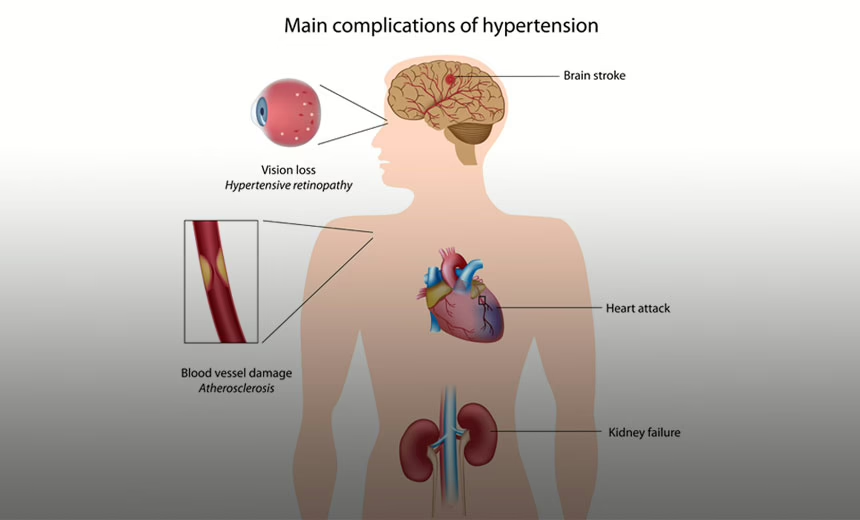Subscribe to eyeMatters periodic news
"*" indicates required fields

Hypertensive retinopathy

High blood pressure (also known as hypertension) will put you at risk of developing a number of health disorders, including those that affect the heart, brain, kidneys, arteries – and the eyes. Hypertensive retinopathy is the name given to damage to the retina, as a result of high blood pressure. The retina is the layer of tissue at the back of the eye that works like the film in a camera. It plays such an important part in a person’s vision that any damage to it is considered serious.
What causes hypertensive retinopathy?
If you have high blood pressure, this can lead to the narrowing of the tiny, delicate vessels that supply blood to the retina. This damage can lead to the loss of clarity in your vision. The higher your blood pressure and the longer it has been elevated, the higher the risk of damage. Other factors can also contribute to hypertensive retinopathy including diabetes, high cholesterol and smoking. All of these issues can increase the risk of damage and, potentially, cause vision loss.
Treatment
The only way to treat hypertensive retinopathy is to control your blood pressure and ensure that it doesn’t become too high.
Symptoms of hypertensive retinopathy
Unfortunately, if you are suffering hypertensive retinopathy you may not realise it, as the symptoms aren’t always obvious. However, there are a few signals that may indicate you are suffering from the condition:
- Double vision or dimmer-than-usual vision
- Headaches
- Visual disturbances or sudden vision loss.
All of these signs must be dealt with immediately.
Diagnosing hypertensive retinopathy
Your eye surgeon will use an instrument known as an ophthalmoscope to check for any sign that the blood vessels in the eye have narrowed, or whether there are signs of fluid leaking from the blood vessels. Then, he or she will assess the degree of damage. The severity of hypertensive retinopathy varies. Diagnosis is provided in ‘stages’:
Grade 1. At the minimum level, there may be no obvious symptoms and the narrowing of your arteries can be barely detectable.
Grade 2.The narrowing of your arteries is detectable. You may also be experiencing visual irregularities.
Grade 3. There may be a number of changes in the blood vessels, leakage from the blood vessels and swelling elsewhere in the retina.
Grade 4. At this level, the hypertensive retinopathy may include swelling of the optic nerve and the centre of the retina – the macula. This can cause vision loss. Your ophthalmologist may use a fluorescent dye and a specialised camera to examine the condition of the blood vessels (this is called a fluorescein angiography).
Outcome
The retina will usually recover if the blood pressure can be controlled, but a grade 4 level of retinopathy is likely to involve permanent damage to the optic nerve or macula. Severe (grade 4) sufferers of retinopathy may also have other health issues such as heart and kidney problems, and are at a greater risk of having a stroke. If you suffer from high blood pressure and notice any signs of vision loss or headaches, urgent medical attention is required.
Summary
If you suffer from high blood pressure, this can be a chronic medical condition. See your GP, who will help you to take steps to control your blood pressure – this will include following a healthy diet and exercise. If you suffer from high blood pressure and have any symptoms that could indicate it is affecting your eyesight, see an ophthalmologist immediately.
The information on this page is general in nature. All medical and surgical procedures have potential benefits and risks. Consult your ophthalmologist for specific medical advice.
Date last reviewed: 2025-10-28 | Date for next review: 2027-10-28
